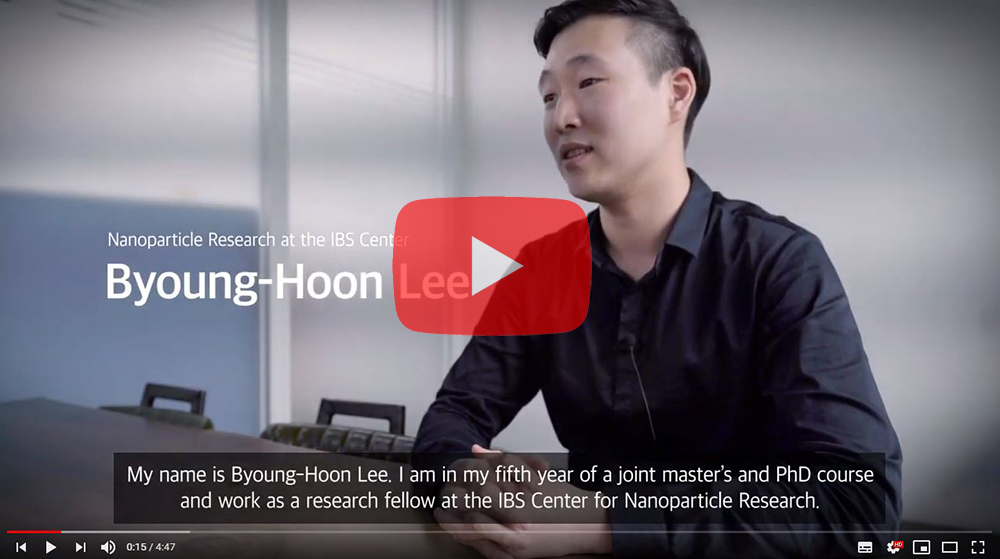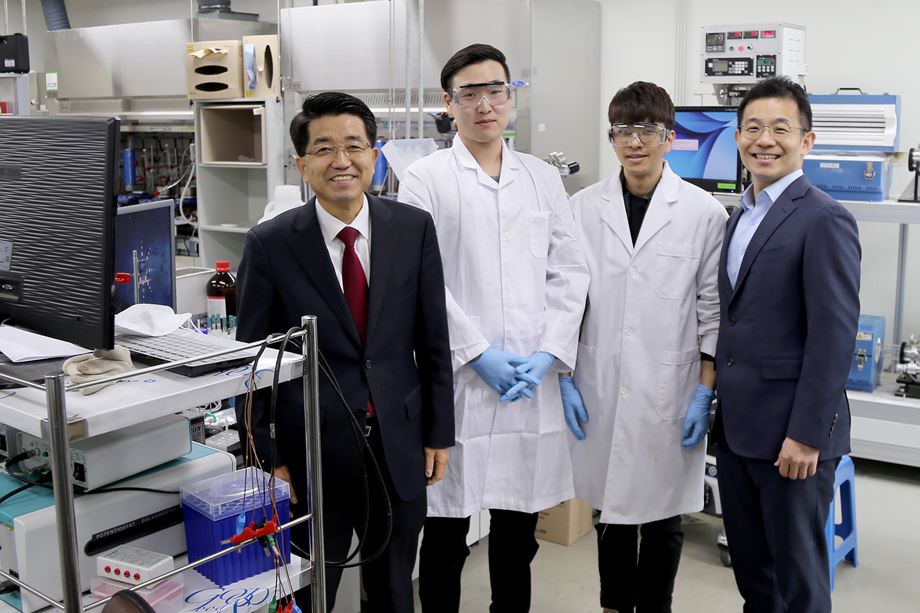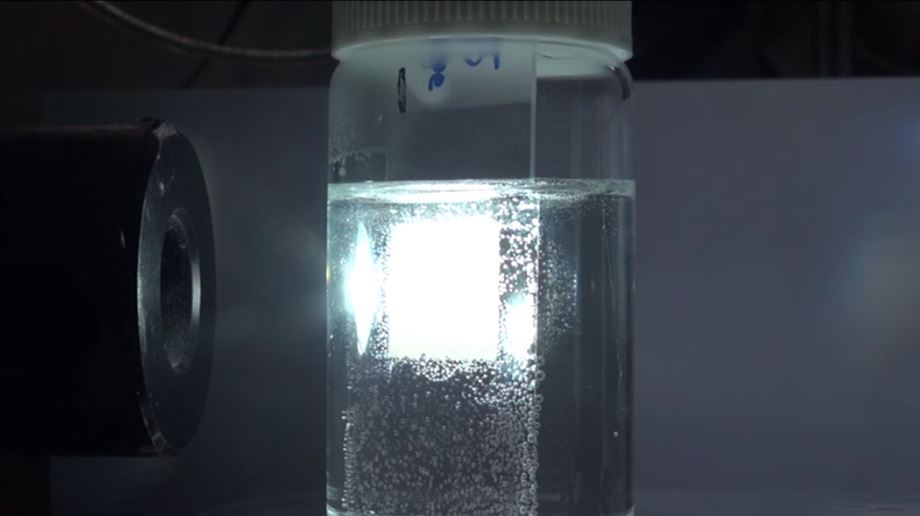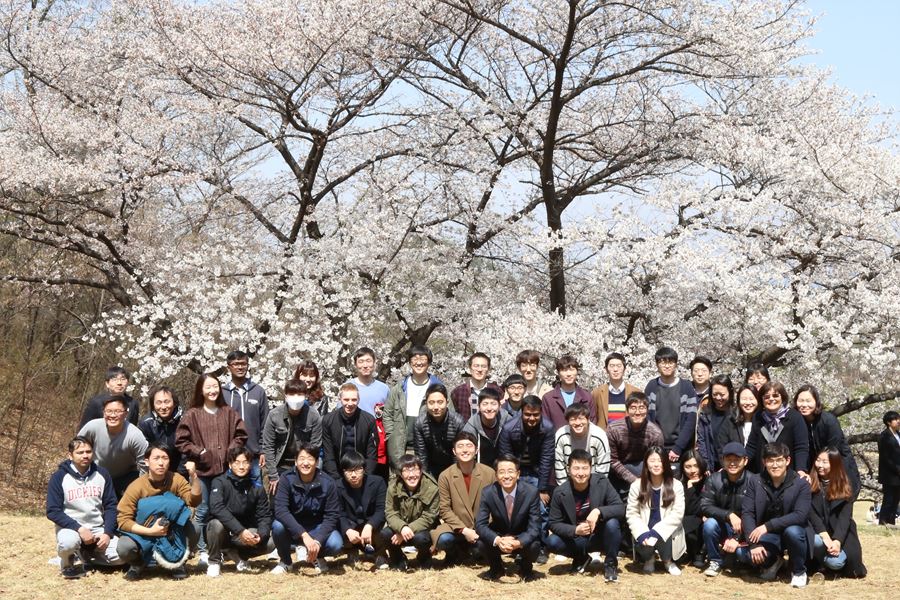주메뉴
- About IBS 연구원소개
-
Research Centers
연구단소개
- Research Outcomes
- Mathematics
- Physics
- Center for Underground Physics
- Center for Theoretical Physics of the Universe (Particle Theory and Cosmology Group)
- Center for Theoretical Physics of the Universe (Cosmology, Gravity and Astroparticle Physics Group)
- Dark Matter Axion Group
- Center for Artificial Low Dimensional Electronic Systems
- Center for Theoretical Physics of Complex Systems
- Center for Quantum Nanoscience
- Center for Exotic Nuclear Studies
- Center for Van der Waals Quantum Solids
- Center for Relativistic Laser Science
- Chemistry
- Life Sciences
- Earth Science
- Interdisciplinary
- Center for Neuroscience Imaging Research (Neuro Technology Group)
- Center for Neuroscience Imaging Research (Cognitive and Computational Neuroscience Group)
- Center for Algorithmic and Robotized Synthesis
- Center for Genome Engineering
- Center for Nanomedicine
- Center for Biomolecular and Cellular Structure
- Center for 2D Quantum Heterostructures
- Center for Quantum Conversion Research
- Institutes
- Korea Virus Research Institute
- News Center 뉴스 센터
- Career 인재초빙
- Living in Korea IBS School-UST
- IBS School 윤리경영


주메뉴
- About IBS
-
Research Centers
- Research Outcomes
- Mathematics
- Physics
- Center for Underground Physics
- Center for Theoretical Physics of the Universe (Particle Theory and Cosmology Group)
- Center for Theoretical Physics of the Universe (Cosmology, Gravity and Astroparticle Physics Group)
- Dark Matter Axion Group
- Center for Artificial Low Dimensional Electronic Systems
- Center for Theoretical Physics of Complex Systems
- Center for Quantum Nanoscience
- Center for Exotic Nuclear Studies
- Center for Van der Waals Quantum Solids
- Center for Relativistic Laser Science
- Chemistry
- Life Sciences
- Earth Science
- Interdisciplinary
- Center for Neuroscience Imaging Research (Neuro Technology Group)
- Center for Neuroscience Imaging Research (Cognitive and Computational Neuroscience Group)
- Center for Algorithmic and Robotized Synthesis
- Center for Genome Engineering
- Center for Nanomedicine
- Center for Biomolecular and Cellular Structure
- Center for 2D Quantum Heterostructures
- Center for Quantum Conversion Research
- Institutes
- Korea Virus Research Institute
- News Center
- Career
- Living in Korea
- IBS School
News Center
| 제목 | Scientist in love with the universe of nanoscience | ||||
|---|---|---|---|---|---|
| 작성자 | 전체관리자 | 등록일 | 2019-08-01 | 조회 | 4412 |
| 첨부 |
 thumb.jpg
thumb.jpg
|
||||
Scientist in love with the universe of nanoscience- LEE Byoung-Hoon, research fellow of the Center for Nanoparticle Research - The basic units of matter are atoms that are 0.1-0.2 nanometer in diameter. A nanometer (nm) is a measurement unit. 1 nm equals one billionth of a meter and is 50,000-100,000 times smaller than the diameter of a human hair. Nanoparticles are materials between 1 and 100 nm in size and made of atoms. Nano-materials include DNA and proteins; the basic building blocks of our body. Research fellow LEE Byoung-Hoon of the Center for Nanoparticle Research, who is also in a joint master’s and PhD course at Seoul National University, has fallen for the charm of these tiny particles that are impossible to observe with the naked eye. He became committed to this field after participating in seminars on nano-materials and their applications. The researcher is currently focusing on nanoparticles’ applications in the energy industry.
The color of gold in the nano world is not what we knowScientists were first able to observe atoms in the early 1900s. However, it was only from the late 1990s when we can manipulate atoms at the nanoscale. Why did we spend so much time on such tiny matters? The macroscopic world that we can see with our naked eye is built upon the more fundamental properties of matter that exists in the microscopic world, just like how the pattern of DNA in the microscopic world results in the variety of outward looks and abilities of human being. As different genetic properties result in different appearances and personalities, seemingly minor interruptions in the microscopic world lead to significant changes in the macroscopic world. Nano research started with an aim to understand the macroscopic world based on the properties of the microscopic world. In the process of investigating nanoscience, scientists have also learned that materials consisting of the same atoms display different properties depending on size. For instance, in the nano world, the color of gold (Au) changes from red and yellow to blue and purple based on the size. And even diamond, the hardest material known to mankind, can be flexible and elastic in this world. “Nanoparticles exhibit unique properties that are different from the properties of bulk materials that we see with our naked eye,” Lee explained. “That is why nano technology’s ability to manipulate nanoparticles is spotlighted as a key technology that will transform the future.” With developments in science and technology, including microscopes, scientists now can study materials at a smaller scale, such as picometer (pm, 10-12m) or femtometer (fm, 10-15m). The rise of picoscience and femtoscience may be regarded as a threat to nanoscience. However, Lee believes different, “I think nanoscience is kind of a prerequisite for understanding the macroscopic world. Different fields of science and technology in the microscopic world are not separated; rather, they will grow together, helping each other.”
Understand the world through nanoparticlesThe IBS Center for Nanoparticle Research, where he conducts research, has produced outcomes that can make our lives more convenient with the harnessing of nanoparticles. A great example is the development of a nanocatalyst that can produce hydrogen, a clean energy source, using light. According to the paper published in Nature Materials in April 2019, titanium dioxide photocatalysts incorporating single copper atoms (Cu/TiO2) exhibit the highest efficiency compared to existing nanocatalysts. “Energy from photosynthesis grows plants and is transferred to animals through the food chain. So we can say that all organisms on Earth get their energy from the Sun. Despite advances in science and technology, we have not developed an energy source that can exceed nature’s mechanism which has been evolving for countless years. That might be one of the reasons that the ultimate goal of many nano-scientists, including myself, is to create an energy source that outperforms natural photosynthesis or bio-catalysis,” he said.
Nanoscience is the universeAs nanoscience is a relatively new field, there is a long way to go. Lee said that there have been many puzzling moments where experimental data seem hard to make sense of with conventional scientific understanding. At these times, he tries to analyze data from an objective and creative perspective through discussions with his fellow researchers. He mentioned that the charm of nanoscience is to discover and understand an unusual phenomenon and based on the understanding, to create new knowledge, which contributes to other fields of science and technology. “There are two ultimate goals of modern science; first, to gain a complete understanding of cosmic phenomena and second, to figure out physical, chemical, and biological phenomena at the atomic level. They are at opposite ends of the size spectrum, one at the smallest scale and the other at the largest. However, what they have in common is that there is no limit to scientific potential and knowledge.” Lee explained nanoscience is similar to studying the universe because there is plenty to explore in both fields. From the atomic perspective, the macroscopic world may appear much like a limitless space, such as how the universe looks to us.
Dahee Carol Kim |
|||||
| 다음 | |
|---|---|
| 이전 |
- Content Manager
- Public Relations Team : Yim Ji Yeob 042-878-8173
- Last Update 2023-11-28 14:20










 Click to watch the video interview
Click to watch the video interview



